The 50 Best Albums of 2022 (So Far)
Images courtesy of the artists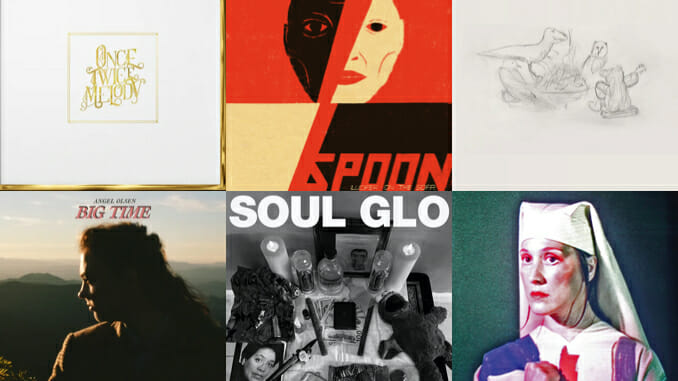
If 2021 was the year musicians finally returned to the road, then 2022 is the year they released albums designed to draw crowds. Here at early July’s dead center of the year, we’re already neck-deep in stellar LPs, many of which were envisioned at the height of pandemic isolation and uncertainty. These artists bided their time, using it the only way they knew how: channeling their joy and anxiety, wisdom and rage into their songwriting.
We’ve spent the past two years wondering when things will go “back to normal,” but 2022 is showing us that “normal” no longer exists. That makes the very humanity of music all the more precious, doesn’t it? They call them “records” for a reason—these are documents of how, when faced with overwhelming challenges in a rapidly changing world, we did what humans always do: We persevered, and made the best of it.
The “best” is what we’re here to catalog, but rest assured these 50 albums are the tip of a truly incredible iceberg. Typically, our midyear list includes only half this many LPs—in 2022, we knew better than to even attempt that. These were the albums that stood out even in such an exceptional field, created by peak-of-their-powers veterans like Big Thief and Beach House, as well as meteoric up-and-comers a la Ethel Cain and Wet Leg.
Listen to our Best Albums of 2022 (So Far) playlist on Spotify here.
Here are the 50 Best Albums of 2022 (So Far):
 50. Oso Oso: Sore ThumbAs records like Basking in the Glow and The Yunahon Mixtape demonstrate, no one is better at blending indie rock and emo than Jade Lilitri, the Long Beach, New York, native who makes summery tunes under the alias Oso Oso. His latest, Sore Thumb, is a collection of demos he made with his close friend, cousin and guitarist, the late Tavish Maloney. Following Maloney’s passing, Lilitri chose to release these tracks as they were to pay tribute to him. Although the songs have been mixed and mastered, they’re still the original recordings that Lilitri and Maloney made together. Sore Thumb, simultaneously by design and by incident, is a testament to unconditional love and companionship. “Write 12 songs / Swing like you can’t miss,” Lilitri declares on opener “Computer Exploder.” On Sore Thumb, Oso Oso doesn’t miss. —Grant Sharples
50. Oso Oso: Sore ThumbAs records like Basking in the Glow and The Yunahon Mixtape demonstrate, no one is better at blending indie rock and emo than Jade Lilitri, the Long Beach, New York, native who makes summery tunes under the alias Oso Oso. His latest, Sore Thumb, is a collection of demos he made with his close friend, cousin and guitarist, the late Tavish Maloney. Following Maloney’s passing, Lilitri chose to release these tracks as they were to pay tribute to him. Although the songs have been mixed and mastered, they’re still the original recordings that Lilitri and Maloney made together. Sore Thumb, simultaneously by design and by incident, is a testament to unconditional love and companionship. “Write 12 songs / Swing like you can’t miss,” Lilitri declares on opener “Computer Exploder.” On Sore Thumb, Oso Oso doesn’t miss. —Grant Sharples
 49. Jenny Hval: Classic ObjectsNorwegian musician and writer Jenny Hval handles femininity with equal parts grace and terror. Her hypnotic art-pop is simply spectacular, even when she abstracts some of the body’s biggest horrors. Classic Objects is Hval’s attempt at creating a pop album, and with that shift comes some of her most personal work yet. Each song has choruses and verses, all of which were conceived from her most intimate moments that she reflected on during the pandemic. In press materials, Hval said “a song isn’t just words, it has a melody, and the reason we have melodies is to step into the dark and jump off cliffs.” On Classic Objects, Hval free-falls into euphoric vulnerability. —Jade Gomez
49. Jenny Hval: Classic ObjectsNorwegian musician and writer Jenny Hval handles femininity with equal parts grace and terror. Her hypnotic art-pop is simply spectacular, even when she abstracts some of the body’s biggest horrors. Classic Objects is Hval’s attempt at creating a pop album, and with that shift comes some of her most personal work yet. Each song has choruses and verses, all of which were conceived from her most intimate moments that she reflected on during the pandemic. In press materials, Hval said “a song isn’t just words, it has a melody, and the reason we have melodies is to step into the dark and jump off cliffs.” On Classic Objects, Hval free-falls into euphoric vulnerability. —Jade Gomez
 48. Charli XCX: CRASHCRASH is the most conventional entry in Charli XCX’s repertoire, eschewing the experimental nature of her prior work at every juncture. Fans hoping for something in line with the 2017 mixtape Pop 2 will find little to latch onto; CRASH is much more a survey of her earlier music. Songs like “Move Me” evoke the rap-sung style of “What I Like” and “Grins” from 2013’s True Romance. The confectionery production of “Yuck” would feel at home on 2014’s Sucker. At her core, Charli is an admirer of pop music and its history, and wanted the record to reflect that. The 12 tracks that make up CRASH traverse pop history, folding in the drama of Italo disco, the grandeur of ’80s pop and the disaffected sleaze of the late aughts. For an artist often praised for the forward-thinking style of her craft, it’s fascinating to see her looking backward. —Eric Bennett
48. Charli XCX: CRASHCRASH is the most conventional entry in Charli XCX’s repertoire, eschewing the experimental nature of her prior work at every juncture. Fans hoping for something in line with the 2017 mixtape Pop 2 will find little to latch onto; CRASH is much more a survey of her earlier music. Songs like “Move Me” evoke the rap-sung style of “What I Like” and “Grins” from 2013’s True Romance. The confectionery production of “Yuck” would feel at home on 2014’s Sucker. At her core, Charli is an admirer of pop music and its history, and wanted the record to reflect that. The 12 tracks that make up CRASH traverse pop history, folding in the drama of Italo disco, the grandeur of ’80s pop and the disaffected sleaze of the late aughts. For an artist often praised for the forward-thinking style of her craft, it’s fascinating to see her looking backward. —Eric Bennett
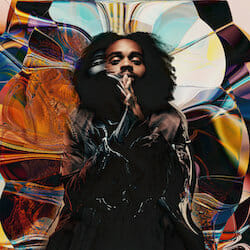 47. Fly Anakin: FrankRising rapper Fly Anakin’s debut album Frank is a love letter to the soul and R&B of his childhood, adding his own flair and painting a blank canvas with his picturesque lyricism. The Richmond rapper’s unique voice rests between snarling and singing, effortlessly delivering bars with a conversational tone that draws you in. Frank is anchored by Anakin, but is kept afloat with the help of his carefully curated set of collaborators, ranging from production legend Madlib and internet celebrity-turned-producer Jay Versace to underground rap stars Pink Siifu and Nickelus F. Frank is the perfect introduction to the thrilling mind of one of rap’s brightest. —Jade Gomez
47. Fly Anakin: FrankRising rapper Fly Anakin’s debut album Frank is a love letter to the soul and R&B of his childhood, adding his own flair and painting a blank canvas with his picturesque lyricism. The Richmond rapper’s unique voice rests between snarling and singing, effortlessly delivering bars with a conversational tone that draws you in. Frank is anchored by Anakin, but is kept afloat with the help of his carefully curated set of collaborators, ranging from production legend Madlib and internet celebrity-turned-producer Jay Versace to underground rap stars Pink Siifu and Nickelus F. Frank is the perfect introduction to the thrilling mind of one of rap’s brightest. —Jade Gomez
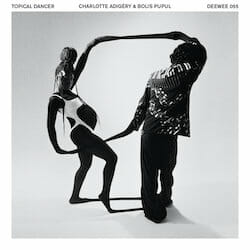 46. Charlotte Adigéry & Bolis Pupul: Topical DancerCharlotte Adigéry and frequent collaborator Bolis Pupul make magic together, and the former’s straightforward, charming commentary and wit land even harder with the latter’s dense club-ready beats. Adigéry uses humor to shine light on issues such as sexism and racism, whether it be asking Siri to tell her where she came from or correcting a perverted man who comments on her breasts. Taking up influences from disco, funk and house, Pupul crafts a vibrant ecosystem for Adigéry to croon about some of the worst parts of humanity in a way that shines a light on the issues while still earning a smile. —Jade Gomez
46. Charlotte Adigéry & Bolis Pupul: Topical DancerCharlotte Adigéry and frequent collaborator Bolis Pupul make magic together, and the former’s straightforward, charming commentary and wit land even harder with the latter’s dense club-ready beats. Adigéry uses humor to shine light on issues such as sexism and racism, whether it be asking Siri to tell her where she came from or correcting a perverted man who comments on her breasts. Taking up influences from disco, funk and house, Pupul crafts a vibrant ecosystem for Adigéry to croon about some of the worst parts of humanity in a way that shines a light on the issues while still earning a smile. —Jade Gomez
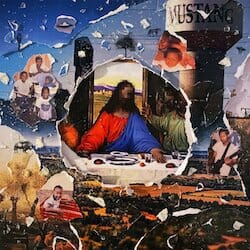 45. Bartees Strange: Farm to TableIt’s his musical elasticity that has earned Bartees Strange universal praise and a devoted fanbase. Although he released a covers EP of The National songs months before his debut, it was his debut album, 2020’s Live Forever, that ultimately launched him into a different league. He understood that the record was going to change his life for better or worse, and he used this uncertainty as fuel for his next project. “I wanted to preserve the brain I had in that moment, ” he said in a recent interview. “If everyone hated Live Forever, I was going to be fucked up. If everyone loved it, I was going to be fucked up.” To preserve his artistic spirit, he began tracking the new record just a day shy of Live Forever’s release. Initially an EP, Farm to Table quickly metamorphosed into a full-blown LP. Similar to the way in which the Super Mario Galaxy team kept churning out brilliant level ideas and used them for a sequel, Farm to Table is yet another showcase for Bartees’ versatile excellence. —Grant Sharples
45. Bartees Strange: Farm to TableIt’s his musical elasticity that has earned Bartees Strange universal praise and a devoted fanbase. Although he released a covers EP of The National songs months before his debut, it was his debut album, 2020’s Live Forever, that ultimately launched him into a different league. He understood that the record was going to change his life for better or worse, and he used this uncertainty as fuel for his next project. “I wanted to preserve the brain I had in that moment, ” he said in a recent interview. “If everyone hated Live Forever, I was going to be fucked up. If everyone loved it, I was going to be fucked up.” To preserve his artistic spirit, he began tracking the new record just a day shy of Live Forever’s release. Initially an EP, Farm to Table quickly metamorphosed into a full-blown LP. Similar to the way in which the Super Mario Galaxy team kept churning out brilliant level ideas and used them for a sequel, Farm to Table is yet another showcase for Bartees’ versatile excellence. —Grant Sharples
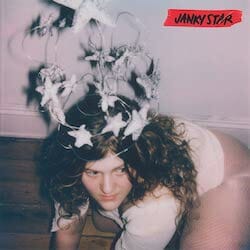 44. Grace Ives: Janky StarGrace Ives comes up for air on her latest record, Janky Star. The queen of charmingly claustrophobic beats, some of the angular synths, and punchy percussion from 2019’s 2nd resurface in her singles. However, she pairs this ear candy with pensive gaps that give her a chance to catch her breath. While she’s ornate as ever on tracks like “Loose,” other tracks like “Lullaby” are mellow in comparison as her vocals melt into a shimmering laze of electro-pop. The themes Ives touches on are as complex as her compositions, as she discusses sobriety, overdoses, escapism, attempting to slow down, and trying to find solid ground in a world that never stops spinning. —Samantha Sullivan
44. Grace Ives: Janky StarGrace Ives comes up for air on her latest record, Janky Star. The queen of charmingly claustrophobic beats, some of the angular synths, and punchy percussion from 2019’s 2nd resurface in her singles. However, she pairs this ear candy with pensive gaps that give her a chance to catch her breath. While she’s ornate as ever on tracks like “Loose,” other tracks like “Lullaby” are mellow in comparison as her vocals melt into a shimmering laze of electro-pop. The themes Ives touches on are as complex as her compositions, as she discusses sobriety, overdoses, escapism, attempting to slow down, and trying to find solid ground in a world that never stops spinning. —Samantha Sullivan
 43. Mitski: Laurel HellMitski is always beckoning, no matter how she may recoil. Her work stacks contradictory compulsions: She wants, and wants to be wanted; at any moment, she’ll offer herself up, or be taken, or take. She has all the power, and none. She can’t have enough or be enough for even herself. A laurel hell, the namesake of her latest album, is a maze where thickets of beautiful flowers grow knotty and impassable, the plants poisonous. Laurel Hell also evokes resting on one’s laurels—getting lazy or complacent about future achievements because you’re focused on past success. It’s almost ironic to consider this ’80s-electro-rock turn unfinished or lax, but such self-criticism is ingrained in Mitski’s work. As she wades into the maze of performance, she’s continually choked by her own ceaseless desire, the enticing flowers disguising the plant’s vicious, toxic acid. Laurel Hell encapsulates the parasitism inherent to performing for consumption and then being consumed. Videogame-glitchy track “Love Me More” is a nod to toxic fandom—something that contributed to Mitski’s departure from social media—as well as the music industry churn. Twinkling synths emulate the inevitable climb: releasing art for yourself, needing fans’ love to buoy that art, and ultimately becoming overwhelmed by that very love. —Caitlin Wolper
43. Mitski: Laurel HellMitski is always beckoning, no matter how she may recoil. Her work stacks contradictory compulsions: She wants, and wants to be wanted; at any moment, she’ll offer herself up, or be taken, or take. She has all the power, and none. She can’t have enough or be enough for even herself. A laurel hell, the namesake of her latest album, is a maze where thickets of beautiful flowers grow knotty and impassable, the plants poisonous. Laurel Hell also evokes resting on one’s laurels—getting lazy or complacent about future achievements because you’re focused on past success. It’s almost ironic to consider this ’80s-electro-rock turn unfinished or lax, but such self-criticism is ingrained in Mitski’s work. As she wades into the maze of performance, she’s continually choked by her own ceaseless desire, the enticing flowers disguising the plant’s vicious, toxic acid. Laurel Hell encapsulates the parasitism inherent to performing for consumption and then being consumed. Videogame-glitchy track “Love Me More” is a nod to toxic fandom—something that contributed to Mitski’s departure from social media—as well as the music industry churn. Twinkling synths emulate the inevitable climb: releasing art for yourself, needing fans’ love to buoy that art, and ultimately becoming overwhelmed by that very love. —Caitlin Wolper
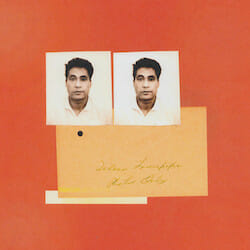 42. Gang of Youths: angel in realtime.Until this album, Gang of Youths had not released anything since 2017’s Go Farther in Lightness, which arrived a year before frontman David Le’aupepe lost his father. angel in realtime., which was poised as a reflection on his life and legacy, is a magical journey through understanding cultural identity, regrets and dreams that spark in the wake of grief. Nestled within grandiose, Bruce Springsteen-esque songs layered with strings, choral arrangements and twinkling keys are special pockets of profound wisdom. Gang of Youths channeled the tragedy of loss into a brilliant magnum opus that is as raw as it is universal. —Jade Gomez
42. Gang of Youths: angel in realtime.Until this album, Gang of Youths had not released anything since 2017’s Go Farther in Lightness, which arrived a year before frontman David Le’aupepe lost his father. angel in realtime., which was poised as a reflection on his life and legacy, is a magical journey through understanding cultural identity, regrets and dreams that spark in the wake of grief. Nestled within grandiose, Bruce Springsteen-esque songs layered with strings, choral arrangements and twinkling keys are special pockets of profound wisdom. Gang of Youths channeled the tragedy of loss into a brilliant magnum opus that is as raw as it is universal. —Jade Gomez
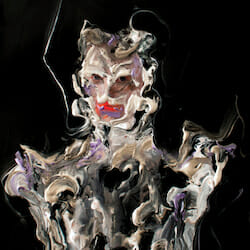 41. Perfume Genius: Ugly SeasonAfter two marquee-lighting records that could be viewed as the “arrival” moments for Perfume Genius, Mike Hadreas and his long-time collaborator and partner Alan Wyffels were ready to take the project back into the black-box theater to stretch the limits of the form on their new record, Ugly Season. The last Perfume Genius record, Set My Heart on Fire Immediately, was indie rock’s cinematic event of 2020. In the two years since, the plan had been to retreat away from the romantic grandeur of that album with a collaboration between Hadreas and well-known choreographer Kate Wallich. Commissioned by the Seattle Theatre Group and Mass MoCA, the dance performance titled The Sun Still Burns Here would star Hadreas—along with Wallich’s company of dancers, The YC—and contain 10 songs that he, Wyffels and Mills had written to accompany it. Those songs live on in two different mediums: a short film by acclaimed animator Jacolby Sattlewhite and as this standalone album. The music that Perfume Genius has created along with Mills on Ugly Season is as methodically paced and layered as you would hope for with a project of this scope. The ebbs and flows of a classical piece or the symphonic accompaniment to a ballet have always remained a template for pop music at its most sweeping and amorous. With Ugly Season, Hadreas and co. slowly draw you in with a sense of sonic mastery that rewards patience and undivided attention. —Pat King
41. Perfume Genius: Ugly SeasonAfter two marquee-lighting records that could be viewed as the “arrival” moments for Perfume Genius, Mike Hadreas and his long-time collaborator and partner Alan Wyffels were ready to take the project back into the black-box theater to stretch the limits of the form on their new record, Ugly Season. The last Perfume Genius record, Set My Heart on Fire Immediately, was indie rock’s cinematic event of 2020. In the two years since, the plan had been to retreat away from the romantic grandeur of that album with a collaboration between Hadreas and well-known choreographer Kate Wallich. Commissioned by the Seattle Theatre Group and Mass MoCA, the dance performance titled The Sun Still Burns Here would star Hadreas—along with Wallich’s company of dancers, The YC—and contain 10 songs that he, Wyffels and Mills had written to accompany it. Those songs live on in two different mediums: a short film by acclaimed animator Jacolby Sattlewhite and as this standalone album. The music that Perfume Genius has created along with Mills on Ugly Season is as methodically paced and layered as you would hope for with a project of this scope. The ebbs and flows of a classical piece or the symphonic accompaniment to a ballet have always remained a template for pop music at its most sweeping and amorous. With Ugly Season, Hadreas and co. slowly draw you in with a sense of sonic mastery that rewards patience and undivided attention. —Pat King
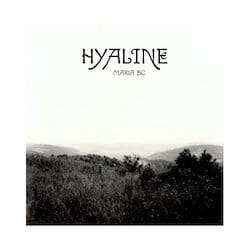 40. Maria BC: Hyaline“Hyaline,” the title of Oakland-based ambient-folk artist Maria BC’s debut album, is defined as describing “a thing that is clear and translucent like glass, especially a smooth sea or a clear sky.” It’s the perfect title—Hyaline itself is hyaline, an array of sparsely populated soundscapes that gives listeners the choice to either study its minute details and subtle fluctuations in texture, or peer right through and see the world anew. Maria BC’s luminous vocals—they are a classically trained mezzo-soprano—glide through close-mic’d slowcore guitars, atmospheric synths and purposeful (read: rare) percussion, burning and flickering like a candle in the dark. The artist’s voice intertwines with guitar arpeggios, piano and itself on the mesmerizing “April,” while on standout “Betelgeuse,” synth and string shapes appear, then dissolve, like clouds in Maria BC’s sky. All you have to do is lay down and look up. —Scott Russell
40. Maria BC: Hyaline“Hyaline,” the title of Oakland-based ambient-folk artist Maria BC’s debut album, is defined as describing “a thing that is clear and translucent like glass, especially a smooth sea or a clear sky.” It’s the perfect title—Hyaline itself is hyaline, an array of sparsely populated soundscapes that gives listeners the choice to either study its minute details and subtle fluctuations in texture, or peer right through and see the world anew. Maria BC’s luminous vocals—they are a classically trained mezzo-soprano—glide through close-mic’d slowcore guitars, atmospheric synths and purposeful (read: rare) percussion, burning and flickering like a candle in the dark. The artist’s voice intertwines with guitar arpeggios, piano and itself on the mesmerizing “April,” while on standout “Betelgeuse,” synth and string shapes appear, then dissolve, like clouds in Maria BC’s sky. All you have to do is lay down and look up. —Scott Russell
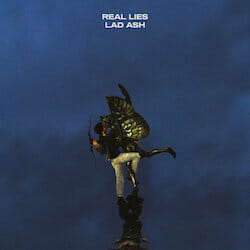 39. Real Lies: Lad AshLondon-based duo Real Lies possess a nocturnal aura about them, slinking into the night as flies on the wall of their city’s backrooms. Lad Ash centers around the main ethos of dance music: unity. On “Boss Trick,” Kevin Lee Kharas reflects on fleeting moments of intimacy as he says, “I felt like I was part of something.” Kharas’ spoken word poises him as a narrator in his own coming-of-age story, telling stories over Patrick King’s wistful electronics. First kisses are weighed with as much love and care as London’s doldrums. Real Lies’ Lad Ash is a loving breakup letter to the past, and its ashes are spread on the dancefloor. —Jade Gomez
39. Real Lies: Lad AshLondon-based duo Real Lies possess a nocturnal aura about them, slinking into the night as flies on the wall of their city’s backrooms. Lad Ash centers around the main ethos of dance music: unity. On “Boss Trick,” Kevin Lee Kharas reflects on fleeting moments of intimacy as he says, “I felt like I was part of something.” Kharas’ spoken word poises him as a narrator in his own coming-of-age story, telling stories over Patrick King’s wistful electronics. First kisses are weighed with as much love and care as London’s doldrums. Real Lies’ Lad Ash is a loving breakup letter to the past, and its ashes are spread on the dancefloor. —Jade Gomez
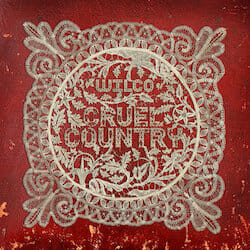 38. Wilco: Cruel CountryWilco’s 12th album is a document of what a super-skilled songwriter and his super-skilled band are capable of when they strip away the distractions and focus on doing what they do best: composing, playing, singing and recording great songs. It’s also a comforting and enjoyable listen—not because it’s more or less “country” than Summerteeth or Sky Blue Sky, but because it is an unobstructed look at a world-class musical machine staying out of its own way. There are country elements, of course, most often in the form of swooping guitar parts played by Nels Cline and Pat Sansone, or Glenn Kotche’s intentional percussion choices, like the clip-clop sound that echoes in the background of the title track or the boom-chick feel of lead single “Falling Apart (Right Now).” But Cruel Country also boasts sparsely arranged folk songs about harrowing memories (“Ambulance”), piano-led waltzes that radiate worry (“I Am My Mother”), expansive folk-pop songs that could’ve fit on Summerteeth (“Hearts Hard to Find”), extended acoustic jams (“Bird Without a Tail / Base of My Skull”) and easygoing shuffles like “Hints” that kind of sound like every Wilco song ever, all rolled into one. —Ben Salmon
38. Wilco: Cruel CountryWilco’s 12th album is a document of what a super-skilled songwriter and his super-skilled band are capable of when they strip away the distractions and focus on doing what they do best: composing, playing, singing and recording great songs. It’s also a comforting and enjoyable listen—not because it’s more or less “country” than Summerteeth or Sky Blue Sky, but because it is an unobstructed look at a world-class musical machine staying out of its own way. There are country elements, of course, most often in the form of swooping guitar parts played by Nels Cline and Pat Sansone, or Glenn Kotche’s intentional percussion choices, like the clip-clop sound that echoes in the background of the title track or the boom-chick feel of lead single “Falling Apart (Right Now).” But Cruel Country also boasts sparsely arranged folk songs about harrowing memories (“Ambulance”), piano-led waltzes that radiate worry (“I Am My Mother”), expansive folk-pop songs that could’ve fit on Summerteeth (“Hearts Hard to Find”), extended acoustic jams (“Bird Without a Tail / Base of My Skull”) and easygoing shuffles like “Hints” that kind of sound like every Wilco song ever, all rolled into one. —Ben Salmon
 37. Shamir: HeterosexualityOn his eighth studio album Heterosexuality, Vegas-raised artist Shamir explores his queerness on his own terms and in a world that’s far more accepting, though he’s said “there’s really no mission statement in this [record].” The songs all have meaning, of course, but the ways in which they resonate with different listeners helps Shamir “feel less alone.” Heterosexuality can be an overwhelming listen, packed with emotion and production choices that leave you gasping for air, but it’s also deeply rewarding. Album opener “Gay Agenda” is an industrial banger, like some club-ready Sinead O’Connor. “You’re just stuck in the box that was made for me / And you’re mad I got out and I’m living free / Free your mind, come outside / Pledge allegiance to the gay agenda,” Shamir sings, the last two words soaring ever higher. The track flies in the face of the idea of the “good queer,” willing to make sacrifices for a veneer of acceptability in a heteronormative society, and relishes the idea of the “gay agenda,” that phrase that strikes fear into the hearts of conservatives everywhere. Shamir doesn’t give a fuck about those backwards ass religious nutjobs who claim to care for his soul: “Pray as much as you can, there’s no hope for me / I will see you in hell, I will be bringing the heat.” Regardless of your identity or Shamir’s, Heterosexuality bursts with meaning. Behind every unforgettable hook is a new way to look at ourselves and our world. —Clare Martin
37. Shamir: HeterosexualityOn his eighth studio album Heterosexuality, Vegas-raised artist Shamir explores his queerness on his own terms and in a world that’s far more accepting, though he’s said “there’s really no mission statement in this [record].” The songs all have meaning, of course, but the ways in which they resonate with different listeners helps Shamir “feel less alone.” Heterosexuality can be an overwhelming listen, packed with emotion and production choices that leave you gasping for air, but it’s also deeply rewarding. Album opener “Gay Agenda” is an industrial banger, like some club-ready Sinead O’Connor. “You’re just stuck in the box that was made for me / And you’re mad I got out and I’m living free / Free your mind, come outside / Pledge allegiance to the gay agenda,” Shamir sings, the last two words soaring ever higher. The track flies in the face of the idea of the “good queer,” willing to make sacrifices for a veneer of acceptability in a heteronormative society, and relishes the idea of the “gay agenda,” that phrase that strikes fear into the hearts of conservatives everywhere. Shamir doesn’t give a fuck about those backwards ass religious nutjobs who claim to care for his soul: “Pray as much as you can, there’s no hope for me / I will see you in hell, I will be bringing the heat.” Regardless of your identity or Shamir’s, Heterosexuality bursts with meaning. Behind every unforgettable hook is a new way to look at ourselves and our world. —Clare Martin
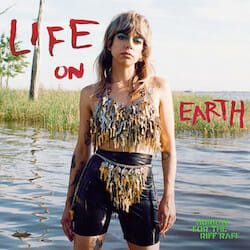 36. Hurray for the Riff Raff: Life on EarthLife on Earth, the seventh album by New Orleans-via-New York folk-blues-punk project Hurray for the Riff Raff, is reinvention with a caveat: Singer/songwriter and frontperson Alynda Segarra has taken such leaps over the last decade and a half as a human being, as well as a musician, that their efforts on Life on Earth express reinvention less than they do rebirth. It’s rare for a record so deep in a band’s discography to function as a fresh start after establishing a style, not to mention a personality, over so many years. With Segarra’s newfound sense of self and a new outlook on life and the world comes a new sound, and a new mission, both related to the old but attuned to the moment. Think of Life on Earth as a guide for staying alive and going to ground even when it seems like there’s no ground to go to: From the very first song, “Wolves,” Segarra appears to be giving their listeners tools for evading danger and death. —Andy Crump
36. Hurray for the Riff Raff: Life on EarthLife on Earth, the seventh album by New Orleans-via-New York folk-blues-punk project Hurray for the Riff Raff, is reinvention with a caveat: Singer/songwriter and frontperson Alynda Segarra has taken such leaps over the last decade and a half as a human being, as well as a musician, that their efforts on Life on Earth express reinvention less than they do rebirth. It’s rare for a record so deep in a band’s discography to function as a fresh start after establishing a style, not to mention a personality, over so many years. With Segarra’s newfound sense of self and a new outlook on life and the world comes a new sound, and a new mission, both related to the old but attuned to the moment. Think of Life on Earth as a guide for staying alive and going to ground even when it seems like there’s no ground to go to: From the very first song, “Wolves,” Segarra appears to be giving their listeners tools for evading danger and death. —Andy Crump
 35. Guerilla Toss: Famously Alive“For the first time in my life, I feel like I’m finally comfortable inside my body,” Guerilla Toss’ Kassie Carlson said about the writing and recording of Famously Alive, and that sense of freedom comes through in spades on the band’s Sub Pop debut. Their brand of surreal DIY bubblegum and maximalist art pop are on full display here as they dodge any straightforward descriptors while still making some of the most accessible music of their time together thus far. Life (and all of its uncomfortable twists and turns) seems to pulse through the veins of the record, choosing the route of primal explosion over any type of measured consideration. Unusual production flourishes like the twangy guitar on “I Got Spirit,” the cavernous vocals on “Pyramid Humm” and the sound effects on “Excitable Girls” only expand upon the sense of fearlessness that permeates the whole record. In taking risks that shouldn’t work and making them assets on each track, Guerrilla Toss make a strong case for embracing that fearlessness. —Elise Soutar
35. Guerilla Toss: Famously Alive“For the first time in my life, I feel like I’m finally comfortable inside my body,” Guerilla Toss’ Kassie Carlson said about the writing and recording of Famously Alive, and that sense of freedom comes through in spades on the band’s Sub Pop debut. Their brand of surreal DIY bubblegum and maximalist art pop are on full display here as they dodge any straightforward descriptors while still making some of the most accessible music of their time together thus far. Life (and all of its uncomfortable twists and turns) seems to pulse through the veins of the record, choosing the route of primal explosion over any type of measured consideration. Unusual production flourishes like the twangy guitar on “I Got Spirit,” the cavernous vocals on “Pyramid Humm” and the sound effects on “Excitable Girls” only expand upon the sense of fearlessness that permeates the whole record. In taking risks that shouldn’t work and making them assets on each track, Guerrilla Toss make a strong case for embracing that fearlessness. —Elise Soutar
 34. Denzel Curry: Melt My Eyez See Your FutureThose who remember the mid ’10s may recall Denzel Curry’s “ULTIMATE” becoming a massive meme, nearly inescapable. The Florida rapper’s high-energy, skull-pounding delivery and beat selection fit perfectly into the rage-rap that took SoundCloud by storm. On Melt My Eyez See Your Future, we see a more intimate side of Curry. Aided by choirs and jazzy instrumentals, Curry bares it all and lays a more minimal soundscape to showcase his magnetic storytelling. In a time where it feels like the world can collapse at any moment, Curry provides a soundtrack to take with you, regardless of how you feel. —Jade Gomez
34. Denzel Curry: Melt My Eyez See Your FutureThose who remember the mid ’10s may recall Denzel Curry’s “ULTIMATE” becoming a massive meme, nearly inescapable. The Florida rapper’s high-energy, skull-pounding delivery and beat selection fit perfectly into the rage-rap that took SoundCloud by storm. On Melt My Eyez See Your Future, we see a more intimate side of Curry. Aided by choirs and jazzy instrumentals, Curry bares it all and lays a more minimal soundscape to showcase his magnetic storytelling. In a time where it feels like the world can collapse at any moment, Curry provides a soundtrack to take with you, regardless of how you feel. —Jade Gomez
 33. Black Country, New Road: Ants from Up ThereWhen Black Country, New Road released their debut album For the first time last February, they’d been sitting on the material for at least a year; songs like “Athens, France” and “Sunglasses,” though ultimately reworked on the album, had already been out since 2019. The group described For the first time as the summation of their first 18 months as a band, a helpful framing for such intricate, yet manic work. Last September, the band confirmed they had already finished a follow-up, and began playing “Bread Song” and “Basketball Shoes’’ during their live sets. These would become parts of Ants From Up There, the group’s sophomore effort. Released just 364 days later, it was an incredibly quick turnaround for the London septet, a result of their remarkable productivity. Ants From Up There feels like the work of a band figuring itself out. While they may not use the term themselves, it’s hard to argue that Black Country, New Road can’t be called a jam band. Try as they might to create short, digestible tracks, they still go long; they’re never married to their songs being presented in just one way, and embrace improvisation. Sure, they come across more self-serious than the stereotypical jam band, but all the markers are there. This is a record that sees Black Country, New Road reestablishing themselves. Having been lauded by nearly every outlet following their debut, you get the sense the band are trying to reset expectations: Buried beneath their own laurels, they’re not afraid to shake them off. —Eric Bennett
33. Black Country, New Road: Ants from Up ThereWhen Black Country, New Road released their debut album For the first time last February, they’d been sitting on the material for at least a year; songs like “Athens, France” and “Sunglasses,” though ultimately reworked on the album, had already been out since 2019. The group described For the first time as the summation of their first 18 months as a band, a helpful framing for such intricate, yet manic work. Last September, the band confirmed they had already finished a follow-up, and began playing “Bread Song” and “Basketball Shoes’’ during their live sets. These would become parts of Ants From Up There, the group’s sophomore effort. Released just 364 days later, it was an incredibly quick turnaround for the London septet, a result of their remarkable productivity. Ants From Up There feels like the work of a band figuring itself out. While they may not use the term themselves, it’s hard to argue that Black Country, New Road can’t be called a jam band. Try as they might to create short, digestible tracks, they still go long; they’re never married to their songs being presented in just one way, and embrace improvisation. Sure, they come across more self-serious than the stereotypical jam band, but all the markers are there. This is a record that sees Black Country, New Road reestablishing themselves. Having been lauded by nearly every outlet following their debut, you get the sense the band are trying to reset expectations: Buried beneath their own laurels, they’re not afraid to shake them off. —Eric Bennett
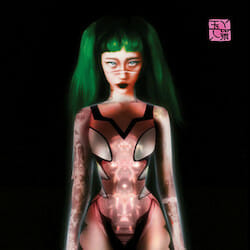 32. yeule: Glitch PrincessSingapore-born Nat Cmiel, aka yeule, has never been one to shy away from that which unsettles, whether it’s the intensely personal subject matter of their songs or the unconventional sonic textures they weave, turning noise-pop inside out. Their third full-length project Glitch Princess turns the intensity up to a 10, swallowing up everything in its path with shiny synths and noise-pitched vocals that collapse into harsh, glitchy musical passages. “You tell me not to be so hard on my own beauty / You still hold me even though / I’m made of fire burning through you,” they sing on the beautiful, relatively straightforward “Don’t Be So Hard on Your Own Beauty,” giving a hint that the album isn’t for the faint of heart, especially not by the time you reach its nearly-five-hour-long (!!!) closing track, the ambient “The Things They Did for Me Out of Love.” If anything, Cmiel is committed to laying out everything they feel with this latest project—and an impressive amount of those big, ambitious swings they take for it pay off. —Elise Soutar
32. yeule: Glitch PrincessSingapore-born Nat Cmiel, aka yeule, has never been one to shy away from that which unsettles, whether it’s the intensely personal subject matter of their songs or the unconventional sonic textures they weave, turning noise-pop inside out. Their third full-length project Glitch Princess turns the intensity up to a 10, swallowing up everything in its path with shiny synths and noise-pitched vocals that collapse into harsh, glitchy musical passages. “You tell me not to be so hard on my own beauty / You still hold me even though / I’m made of fire burning through you,” they sing on the beautiful, relatively straightforward “Don’t Be So Hard on Your Own Beauty,” giving a hint that the album isn’t for the faint of heart, especially not by the time you reach its nearly-five-hour-long (!!!) closing track, the ambient “The Things They Did for Me Out of Love.” If anything, Cmiel is committed to laying out everything they feel with this latest project—and an impressive amount of those big, ambitious swings they take for it pay off. —Elise Soutar
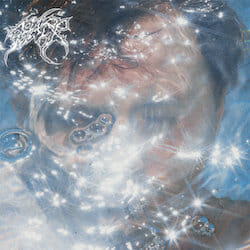 31. PENDANT: HarpUnable to access the kinds of spaces he’d used to record his previous album as PENDANT, Through a Coil, and thus unable to replicate its guitar-based, rock-inspired sonic palette, Los Angeles songwriter Chris Adams was forced to shift his usual creative approach. This ended up being something of a blessing in disguise, as it afforded him the ability to take his already-refined musical techniques into a sphere in which he could operate with a beginner’s mind, embracing synthesizers to form a singular world. Throughout Harp’s 13 tracks, Adams demonstrates a respect and appreciation for the art and history of electronic music. At times, the album feels like taking a tour through the discographies of the genre’s most iconic practitioners—like on the exuberant “Rights For An Angel,” which functions as a not-so-subtle tribute to the legendary Burial, but with the undeniable injection of Adams’ aesthetic eye and talent that livens the track to stadium-sized heights. Similarly, it’s hard not to hear the influence of Human After All-era Daft Punk or early Justice in the striking chords of “Latex Heart” or the vocoded crooning vocals on “Eventless Horizon.” Wherever Adams chooses to let his influences shine through on the album, he juxtaposes these impulses with his own deft hand, leading to wonderfully unique results that usher his references into the modern age. —Jason Friedman
31. PENDANT: HarpUnable to access the kinds of spaces he’d used to record his previous album as PENDANT, Through a Coil, and thus unable to replicate its guitar-based, rock-inspired sonic palette, Los Angeles songwriter Chris Adams was forced to shift his usual creative approach. This ended up being something of a blessing in disguise, as it afforded him the ability to take his already-refined musical techniques into a sphere in which he could operate with a beginner’s mind, embracing synthesizers to form a singular world. Throughout Harp’s 13 tracks, Adams demonstrates a respect and appreciation for the art and history of electronic music. At times, the album feels like taking a tour through the discographies of the genre’s most iconic practitioners—like on the exuberant “Rights For An Angel,” which functions as a not-so-subtle tribute to the legendary Burial, but with the undeniable injection of Adams’ aesthetic eye and talent that livens the track to stadium-sized heights. Similarly, it’s hard not to hear the influence of Human After All-era Daft Punk or early Justice in the striking chords of “Latex Heart” or the vocoded crooning vocals on “Eventless Horizon.” Wherever Adams chooses to let his influences shine through on the album, he juxtaposes these impulses with his own deft hand, leading to wonderfully unique results that usher his references into the modern age. —Jason Friedman
 30. Nilüfer Yanya: PAINLESSNilüfer Yanya’s sophomore effort PAINLESS finds the London singer/songwriter sharpening her sound to a piercing point. In place of the melodic art-rock, bluesy swagger and jazzy sophisti-pop that bloomed across her debut Miss Universe is a more tightly focused and carefully controlled sonic sensibility, defined by precise guitar work, punchy dance-pop beats, hooky vocals and atmospheric production. Yanya’s lyricism is also refreshed, leaving Miss Universe’s high-concept approach behind in favor of more direct, revelatory expression. It’s an exciting step forward from a young artist who has yet to take any other kind. —Scott Russell
30. Nilüfer Yanya: PAINLESSNilüfer Yanya’s sophomore effort PAINLESS finds the London singer/songwriter sharpening her sound to a piercing point. In place of the melodic art-rock, bluesy swagger and jazzy sophisti-pop that bloomed across her debut Miss Universe is a more tightly focused and carefully controlled sonic sensibility, defined by precise guitar work, punchy dance-pop beats, hooky vocals and atmospheric production. Yanya’s lyricism is also refreshed, leaving Miss Universe’s high-concept approach behind in favor of more direct, revelatory expression. It’s an exciting step forward from a young artist who has yet to take any other kind. —Scott Russell
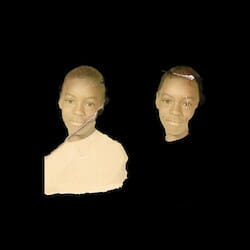 29. Vince Staples: Ramona Park Broke My HeartVince Staples, the calculated California rapper, has slowly shifted over the years. Following the release of his self-titled album in 2021, Staples finally began to open the doors of a new chapter in his artistry that started with gritty, vivid accounts of violence and paranoia. Ramona Park Broke My Heart reflects on his home’s magical qualities. Staples’ arsenal of iconic G-funk influences and bright guitars scribble a heartfelt love letter to the streets and its people. Guided by his urge to tell the truth, Staples does exactly that. —Jade Gomez
29. Vince Staples: Ramona Park Broke My HeartVince Staples, the calculated California rapper, has slowly shifted over the years. Following the release of his self-titled album in 2021, Staples finally began to open the doors of a new chapter in his artistry that started with gritty, vivid accounts of violence and paranoia. Ramona Park Broke My Heart reflects on his home’s magical qualities. Staples’ arsenal of iconic G-funk influences and bright guitars scribble a heartfelt love letter to the streets and its people. Guided by his urge to tell the truth, Staples does exactly that. —Jade Gomez
 28. Porridge Radio: Waterslide, Diving Board, Ladder to the SkyFor Brighton four-piece Porridge Radio, the fate of their sophomore album, Every Bad, was uncertain upon release. Just look at its March 13, 2020, street date and it’s obvious why one would worry about it being lost amidst the social upheaval. Fortunately, Every Bad was an album remarkable enough to break through the noise with some noise of its own: It established Porridge Radio as a deeply gifted band on the come-up. Led by Dana Margolin and composed of Georgie Stott, Sam Yardley and Maddie Ryall, they went from making a soft, subtle Bandcamp indie to building massive, vociferous slacker-rock songs. Their music is frenetic and unpredictable, melodic despite its cacophonous arrangements. Margolin’s voice, dark and powerful, is more often than not being pushed to the edges of its range, strained as though she’s trying to get every last drop of emotion out of each word she screams. As the record played and each song ended with growing chaos and incendiary performances, one could only speculate what power the next track would hold. It’s fair to wonder the same about a follow-up. When you come out swinging like Porridge Radio had, how long before you run out of steam? Waterslide, Diving Board, Ladder to the Sky, the band’s third album, sees them sidestep the trap that question contains. Waterslide is a masterpiece, finding Porridge Radio, and Margolin especially, in an elevated state. They’re eager to embrace uncertainty, leveling up in every regard, sacrificing none of the intensity that made them stand out. —Eric Bennett
28. Porridge Radio: Waterslide, Diving Board, Ladder to the SkyFor Brighton four-piece Porridge Radio, the fate of their sophomore album, Every Bad, was uncertain upon release. Just look at its March 13, 2020, street date and it’s obvious why one would worry about it being lost amidst the social upheaval. Fortunately, Every Bad was an album remarkable enough to break through the noise with some noise of its own: It established Porridge Radio as a deeply gifted band on the come-up. Led by Dana Margolin and composed of Georgie Stott, Sam Yardley and Maddie Ryall, they went from making a soft, subtle Bandcamp indie to building massive, vociferous slacker-rock songs. Their music is frenetic and unpredictable, melodic despite its cacophonous arrangements. Margolin’s voice, dark and powerful, is more often than not being pushed to the edges of its range, strained as though she’s trying to get every last drop of emotion out of each word she screams. As the record played and each song ended with growing chaos and incendiary performances, one could only speculate what power the next track would hold. It’s fair to wonder the same about a follow-up. When you come out swinging like Porridge Radio had, how long before you run out of steam? Waterslide, Diving Board, Ladder to the Sky, the band’s third album, sees them sidestep the trap that question contains. Waterslide is a masterpiece, finding Porridge Radio, and Margolin especially, in an elevated state. They’re eager to embrace uncertainty, leveling up in every regard, sacrificing none of the intensity that made them stand out. —Eric Bennett
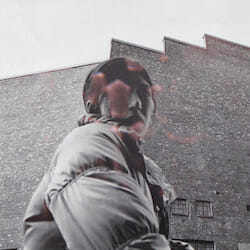 27. Aldous Harding: Warm ChrisOn “Tick Tock,” an early track on her new album Warm Chris, Aldous Harding addresses the absurdity of interpretation. “Wanted to see me, now that you see me, whatcha gonna do?” she taunts in the refrain, defying her witnesses to comprehend her. Her voice-play finds her evoking both Cat Power and Annie Lennox, sliding from the husky lament “Oh, the dirty of it” to a reedy cry of “Party people!” The new album continues Harding’s creative partnership with producer John Parish and evolves her sonic treatment of this Dadaist bent. The sparse instrumental backings of Party and Designer are elevated with a palette that draws from freak folk and baroque piano pop—it’s easy to sift out the influences of Sufjan Stevens and Kate Bush. Warm Chris thrives in that new flexibility, using Harding’s expanded sound to consider the implications of professional and interpersonal performance in turns across its 10 tracks. —Annie Parnell
27. Aldous Harding: Warm ChrisOn “Tick Tock,” an early track on her new album Warm Chris, Aldous Harding addresses the absurdity of interpretation. “Wanted to see me, now that you see me, whatcha gonna do?” she taunts in the refrain, defying her witnesses to comprehend her. Her voice-play finds her evoking both Cat Power and Annie Lennox, sliding from the husky lament “Oh, the dirty of it” to a reedy cry of “Party people!” The new album continues Harding’s creative partnership with producer John Parish and evolves her sonic treatment of this Dadaist bent. The sparse instrumental backings of Party and Designer are elevated with a palette that draws from freak folk and baroque piano pop—it’s easy to sift out the influences of Sufjan Stevens and Kate Bush. Warm Chris thrives in that new flexibility, using Harding’s expanded sound to consider the implications of professional and interpersonal performance in turns across its 10 tracks. —Annie Parnell
 26. Animal Collective: Time SkiffsIn the years after their 2016 album Painting With, Animal Collective’s ambitions started to gear towards scoring visual projects and creating location-based music, until a global pandemic reshaped the way they—and all working musicians—were able to function. Though no strangers to working on music remotely (the original demos for Merriweather Post Pavilion were composed over email), the band were met with the challenge of living up to their legacy while facing an uncertain future for the music industry. The result is Time Skiffs, in which Animal Collective find a way to make peace with the swarms of present-day adulthood anxieties while paying tribute to their past. A far cry from the rushed, electronic dirges of their previous album, Time Skiffs finds the band taking their time and doing what they do best: allowing space, texture and infectious melody to whisk the listener away to various sensory destinations, all with the wisdom and confidence of a group who have weathered life’s storms, and recognize the opportunity for joy and growth that resides within them. —Jason Friedman
26. Animal Collective: Time SkiffsIn the years after their 2016 album Painting With, Animal Collective’s ambitions started to gear towards scoring visual projects and creating location-based music, until a global pandemic reshaped the way they—and all working musicians—were able to function. Though no strangers to working on music remotely (the original demos for Merriweather Post Pavilion were composed over email), the band were met with the challenge of living up to their legacy while facing an uncertain future for the music industry. The result is Time Skiffs, in which Animal Collective find a way to make peace with the swarms of present-day adulthood anxieties while paying tribute to their past. A far cry from the rushed, electronic dirges of their previous album, Time Skiffs finds the band taking their time and doing what they do best: allowing space, texture and infectious melody to whisk the listener away to various sensory destinations, all with the wisdom and confidence of a group who have weathered life’s storms, and recognize the opportunity for joy and growth that resides within them. —Jason Friedman
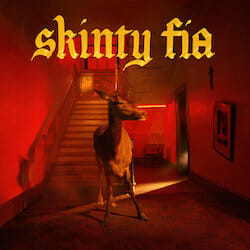 25. Fontaines D.C.: Skinty FiaSkinty Fia simultaneously finds Fontaines D.C. excavating their pasts and forging their futures. The London-via-Dublin quintet have been inundated with acclaim since first rising out of the crowded U.K. post-punk field—their 2019 debut Dogrel was nominated for a Mercury Prize, their 2020 follow-up A Hero’s Death for a Grammy—yet they’ve responded by delving deeper into the dark, growing ever more purposeful as sonic architects while continuing to wrestle with their Irish identities—and their erosion—through their songwriting. Grian Chatten and company made their intentions for their third record clear on lead track “Jackie Down the Line,” melding menacing, character-driven lyric narrative with grunge-y, propulsive rock, a potent combination with which Skinty Fia overflows. The record is named for a curse, but it feels closer to an oath, like Fontaines D.C. swearing they’re here to stay. —Scott Russell
25. Fontaines D.C.: Skinty FiaSkinty Fia simultaneously finds Fontaines D.C. excavating their pasts and forging their futures. The London-via-Dublin quintet have been inundated with acclaim since first rising out of the crowded U.K. post-punk field—their 2019 debut Dogrel was nominated for a Mercury Prize, their 2020 follow-up A Hero’s Death for a Grammy—yet they’ve responded by delving deeper into the dark, growing ever more purposeful as sonic architects while continuing to wrestle with their Irish identities—and their erosion—through their songwriting. Grian Chatten and company made their intentions for their third record clear on lead track “Jackie Down the Line,” melding menacing, character-driven lyric narrative with grunge-y, propulsive rock, a potent combination with which Skinty Fia overflows. The record is named for a curse, but it feels closer to an oath, like Fontaines D.C. swearing they’re here to stay. —Scott Russell
 24. Sharon Van Etten: We’ve Been Going About This All WrongPraising Sharon Van Etten for making “intensely personal” albums is looking at things the wrong way around. Any artist can do that. What sets Van Etten apart is her ability to make albums that feel intensely personal for her listeners—as if she’s giving voice to your inner life, rather than her own. Her sixth album is a loose song cycle that encompasses how it feels to balance work, motherhood and intimacy in a time of roiling uncertainty. That’s a lot to take on, but she nails it: The 10 songs on We’ve Been Going About This All Wrong land hard and, like her best work, take on the meanings her listeners need. Like Remind Me Tomorrow, there’s a wide array of sounds here, from pastoral tunes built around acoustic guitar to synth-heavy jams that clank and snarl like some infernal machine. The difference is that Van Etten has a tighter rein on these songs, giving them a feeling of wildness barely held in check. —Eric R. Danton
24. Sharon Van Etten: We’ve Been Going About This All WrongPraising Sharon Van Etten for making “intensely personal” albums is looking at things the wrong way around. Any artist can do that. What sets Van Etten apart is her ability to make albums that feel intensely personal for her listeners—as if she’s giving voice to your inner life, rather than her own. Her sixth album is a loose song cycle that encompasses how it feels to balance work, motherhood and intimacy in a time of roiling uncertainty. That’s a lot to take on, but she nails it: The 10 songs on We’ve Been Going About This All Wrong land hard and, like her best work, take on the meanings her listeners need. Like Remind Me Tomorrow, there’s a wide array of sounds here, from pastoral tunes built around acoustic guitar to synth-heavy jams that clank and snarl like some infernal machine. The difference is that Van Etten has a tighter rein on these songs, giving them a feeling of wildness barely held in check. —Eric R. Danton
 23. Earl Sweatshirt: SICK!SICK! maintains Earl Sweatshirt’s slowly revealing demeanor, but gives us some of the most clearheaded raps of his career. On “2010,” he talks about his relationship with his mom (“’03, momma rockin’ Liz Claiborne / Had her stressin’ up the wall playin’ Mary J. songs / Rainy day came, couldn’t rinse the stains off”), UCLA Law Professor Cheryl Harris, alluding to the drug and behavioral problems he had that year as Odd Future was blowing up. Backed by Black Noi$e’s potent production, which sounds like walking on gravelly sand at the beach, “Visions” features some of the most upfront lyricism we’ve ever heard from Earl, with him telling us, “I just be weary of self.” Being Earl Sweatshirt isn’t just protecting yourself from the public, but also being self-conscious because of your own inner demons and pain. —Jayson Buford
23. Earl Sweatshirt: SICK!SICK! maintains Earl Sweatshirt’s slowly revealing demeanor, but gives us some of the most clearheaded raps of his career. On “2010,” he talks about his relationship with his mom (“’03, momma rockin’ Liz Claiborne / Had her stressin’ up the wall playin’ Mary J. songs / Rainy day came, couldn’t rinse the stains off”), UCLA Law Professor Cheryl Harris, alluding to the drug and behavioral problems he had that year as Odd Future was blowing up. Backed by Black Noi$e’s potent production, which sounds like walking on gravelly sand at the beach, “Visions” features some of the most upfront lyricism we’ve ever heard from Earl, with him telling us, “I just be weary of self.” Being Earl Sweatshirt isn’t just protecting yourself from the public, but also being self-conscious because of your own inner demons and pain. —Jayson Buford
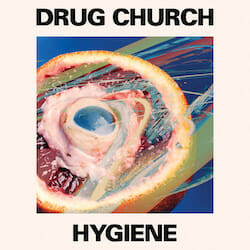 22. Drug Church: HygieneWith their fearless fourth album Hygiene, the follow-up to their 2018 breakout Cheer and 2021’s acclaimed Tawny EP, Drug Church deliver one of the shout-along rock records of the year—this is passionate, no-bullshit music. Hygiene is heavy and hooky in equal measure, as if Nick Cogan and Cory Galusha’s guitars and Patrick Kindlon’s vocals are two animals locking horns with ferocity. “There are things that you see coming / Rolling like slow-moving trains,” Kindlon barks over chainsaw guitars on “World Impact”—Hygiene was one of those things, as is Drug Church’s continued presence at the crest of the melodic hardcore wave, alongside the TURNSTILEs and Fiddleheads of the world. —Scott Russell
22. Drug Church: HygieneWith their fearless fourth album Hygiene, the follow-up to their 2018 breakout Cheer and 2021’s acclaimed Tawny EP, Drug Church deliver one of the shout-along rock records of the year—this is passionate, no-bullshit music. Hygiene is heavy and hooky in equal measure, as if Nick Cogan and Cory Galusha’s guitars and Patrick Kindlon’s vocals are two animals locking horns with ferocity. “There are things that you see coming / Rolling like slow-moving trains,” Kindlon barks over chainsaw guitars on “World Impact”—Hygiene was one of those things, as is Drug Church’s continued presence at the crest of the melodic hardcore wave, alongside the TURNSTILEs and Fiddleheads of the world. —Scott Russell
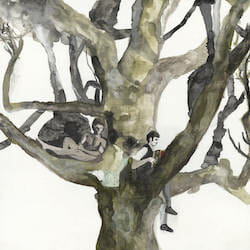 21. Destroyer: LABYRINTHITIS“I don’t know / Where I’m going,” Dan Bejar sings on second LABYRINTHITIS single “Eat the Wine, Drink the Bread,” observing, “It’s insane in here, it’s a lunacy out there.” Destroyer’s 13th studio album is, indeed, a document of topsy-turvy times, written mostly in 2020 and recorded the following spring, with Bejar and John Collins working virtually from Vancouver and the remote Galiano Island, respectively. But then again, when has a Destroyer record operated according to any logic but its own? On LABYRINTHITIS, the band take disco, Art of Noise and New Order as their muses, disappearing further down the dance-pop rabbit hole they skirted on 2017’s ken and dove headfirst into on 2020’s Have We Met. Bejar and company are still indulging their quirks and seeking new horizons in their fourth decade as a band, and the result on LABYRINTHITIS is well-worth getting lost in. —Scott Russell
21. Destroyer: LABYRINTHITIS“I don’t know / Where I’m going,” Dan Bejar sings on second LABYRINTHITIS single “Eat the Wine, Drink the Bread,” observing, “It’s insane in here, it’s a lunacy out there.” Destroyer’s 13th studio album is, indeed, a document of topsy-turvy times, written mostly in 2020 and recorded the following spring, with Bejar and John Collins working virtually from Vancouver and the remote Galiano Island, respectively. But then again, when has a Destroyer record operated according to any logic but its own? On LABYRINTHITIS, the band take disco, Art of Noise and New Order as their muses, disappearing further down the dance-pop rabbit hole they skirted on 2017’s ken and dove headfirst into on 2020’s Have We Met. Bejar and company are still indulging their quirks and seeking new horizons in their fourth decade as a band, and the result on LABYRINTHITIS is well-worth getting lost in. —Scott Russell
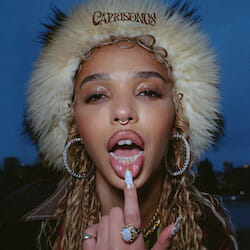 20. FKA twigs: CAPRISONGS“I made you a mixtape because when I feel you, I feel me,” FKA twigs casually remarks on “ride the dragon,” the opening track on her debut mixtape CAPRISONGS. The singer’s first foray into the classic format is off-putting at first, since she is one of music’s most progressive pop personalities. Twigs’ most recent album, 2019’s MAGDALENE, was quite the dramatic statement, with religious allusions wrapped tightly in ethereal and operatic vocals, then placed against stirring instrumentation. It felt like at any moment, her voice could shatter like glass and the song would be all the better for it. On CAPRISONGS, the turmoil she carries is palpable, but her disposition is different. There are theatrics, but twigs replaces overwhelming intensity with playfulness and self-awareness. It’s the most confident she’s ever been. —Candace McDuffie
20. FKA twigs: CAPRISONGS“I made you a mixtape because when I feel you, I feel me,” FKA twigs casually remarks on “ride the dragon,” the opening track on her debut mixtape CAPRISONGS. The singer’s first foray into the classic format is off-putting at first, since she is one of music’s most progressive pop personalities. Twigs’ most recent album, 2019’s MAGDALENE, was quite the dramatic statement, with religious allusions wrapped tightly in ethereal and operatic vocals, then placed against stirring instrumentation. It felt like at any moment, her voice could shatter like glass and the song would be all the better for it. On CAPRISONGS, the turmoil she carries is palpable, but her disposition is different. There are theatrics, but twigs replaces overwhelming intensity with playfulness and self-awareness. It’s the most confident she’s ever been. —Candace McDuffie
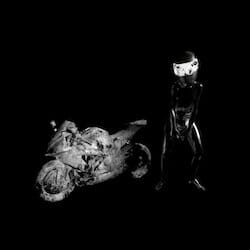 19. MJ Lenderman: Boat SongsWith the widely acclaimed Boat Songs under his belt, Asheville, North Carolina’s MJ Lenderman has now broken out as both a Wednesday member and a solo artist. The opening 1-2 punch of “Hangover Game,” which presents an alternate theory about Michael Jordan’s legendary “flu game,” and “You Have Bought Yourself a Boat,” in which somebody buys a boat, will lock you into the latest from Lenderman, whose shaggy alt-country sound belies thoughtful, detailed and down-to-earth songwriting, through which his sense of humor also shines. There are odes to “Dan Marino” and “Six Flags” here, conjuring any Southerner’s idea of a good time. Lenderman says in press materials that his new songs, the first he’s recorded in a professional studio, “chase fulfillment and happiness” above all else. In a time when the world feels particularly precarious, there’s arguably no better pursuit than that. —Scott Russell
19. MJ Lenderman: Boat SongsWith the widely acclaimed Boat Songs under his belt, Asheville, North Carolina’s MJ Lenderman has now broken out as both a Wednesday member and a solo artist. The opening 1-2 punch of “Hangover Game,” which presents an alternate theory about Michael Jordan’s legendary “flu game,” and “You Have Bought Yourself a Boat,” in which somebody buys a boat, will lock you into the latest from Lenderman, whose shaggy alt-country sound belies thoughtful, detailed and down-to-earth songwriting, through which his sense of humor also shines. There are odes to “Dan Marino” and “Six Flags” here, conjuring any Southerner’s idea of a good time. Lenderman says in press materials that his new songs, the first he’s recorded in a professional studio, “chase fulfillment and happiness” above all else. In a time when the world feels particularly precarious, there’s arguably no better pursuit than that. —Scott Russell
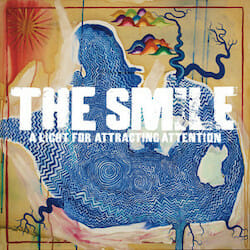 18. The Smile: A Light For Attracting AttentionDuring the first year of the pandemic, as Radiohead seemingly shifted from active band to archival project, Thom Yorke and Jonny Greenwood did something they haven’t done since their teenage years: They formed a new band together. They called it The Smile—a reference to a Ted Hughes poem, not their sunny dispositions, in case there was any confusion—and they invited Tom Skinner, drummer for the British jazz group Sons of Kemet, to fill the intimidating position of the sole non-Radiohead member of the trio. Nearly half the time, A Light for Attracting Attention buzzes and crackles with a sense of reckless abandon absent from the last 15 years’ worth of Radiohead releases. “You Will Never Work in Television Again” has the high-octane guitars and mile-a-minute Yorke delivery to boost a dead person’s heart rate. It’s a revelation. “Thin Thing” is menacing and wonky, with a burbling guitar riff that seems maximized to confuse those YouTube guitar tutorial guys. These songs are insular and anxiety-ridden, shorn of soaring choruses or straightforward rhythms, but they are also invigorating jolts of art-rock energy. Like much of this album, the emphasis is on proggy interplay over studio trickery. But this is hardly a barebones garage-rock diversion. The Smile contain multitudes. No Radiohead side project has ever sounded quite as much like Radiohead as this band does, invoking many eras of the band’s career at once. I assume I Can’t Believe It’s Not Radiohead! was a rejected album title. —Zach Schonfeld
18. The Smile: A Light For Attracting AttentionDuring the first year of the pandemic, as Radiohead seemingly shifted from active band to archival project, Thom Yorke and Jonny Greenwood did something they haven’t done since their teenage years: They formed a new band together. They called it The Smile—a reference to a Ted Hughes poem, not their sunny dispositions, in case there was any confusion—and they invited Tom Skinner, drummer for the British jazz group Sons of Kemet, to fill the intimidating position of the sole non-Radiohead member of the trio. Nearly half the time, A Light for Attracting Attention buzzes and crackles with a sense of reckless abandon absent from the last 15 years’ worth of Radiohead releases. “You Will Never Work in Television Again” has the high-octane guitars and mile-a-minute Yorke delivery to boost a dead person’s heart rate. It’s a revelation. “Thin Thing” is menacing and wonky, with a burbling guitar riff that seems maximized to confuse those YouTube guitar tutorial guys. These songs are insular and anxiety-ridden, shorn of soaring choruses or straightforward rhythms, but they are also invigorating jolts of art-rock energy. Like much of this album, the emphasis is on proggy interplay over studio trickery. But this is hardly a barebones garage-rock diversion. The Smile contain multitudes. No Radiohead side project has ever sounded quite as much like Radiohead as this band does, invoking many eras of the band’s career at once. I assume I Can’t Believe It’s Not Radiohead! was a rejected album title. —Zach Schonfeld
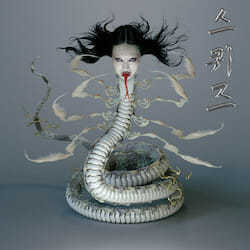 17. SASAMI: SqueezeIn a 2021 Ringer oral history on alt-metal band System of a Down’s sophomore album Toxicity, exactly one non-metal musician was quoted—or at least she wasn’t a metal musician at the time. “System of a Down taps this super-dark energy then puts it towards something they have real rage about, like all the insecurity and political toxicity of their homeland, and the state of human existence,” said Sasami Ashworth, aka SASAMI. On her sophomore LP Squeeze, the 31-year-old Los Angeles musician emulates her idols, mostly ditching the yearning shoegaze and dream-pop of her self-titled 2019 debut for metal, industrial and grunge. Through these newly loud and aggressive sounds—Ashworth has also played synth in Cherry Glazerr and, in a couple of TV appearances, Japanese Breakfast—she forges a space in which one can combine their own rage with hers and feel newly liberated through group catharsis, without inflicting any real-world violence. The maelstrom of distorted guitars and pounding percussion results in her best songs yet. —Max Freedman
17. SASAMI: SqueezeIn a 2021 Ringer oral history on alt-metal band System of a Down’s sophomore album Toxicity, exactly one non-metal musician was quoted—or at least she wasn’t a metal musician at the time. “System of a Down taps this super-dark energy then puts it towards something they have real rage about, like all the insecurity and political toxicity of their homeland, and the state of human existence,” said Sasami Ashworth, aka SASAMI. On her sophomore LP Squeeze, the 31-year-old Los Angeles musician emulates her idols, mostly ditching the yearning shoegaze and dream-pop of her self-titled 2019 debut for metal, industrial and grunge. Through these newly loud and aggressive sounds—Ashworth has also played synth in Cherry Glazerr and, in a couple of TV appearances, Japanese Breakfast—she forges a space in which one can combine their own rage with hers and feel newly liberated through group catharsis, without inflicting any real-world violence. The maelstrom of distorted guitars and pounding percussion results in her best songs yet. —Max Freedman
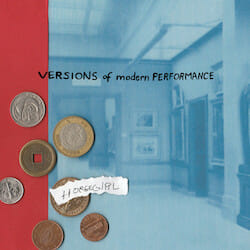 16. Horsegirl: Versions of Modern PerformanceHorsegirl are three friends who make music in a basement. It’s true, and they want you to know that, not because they’re shy about the attention they’ve received as indie rock’s latest breakthrough, but because the Chicago trio of Penelope Lowenstein, Nora Cheng and Gigi Reece want you to know that they’re having fun. They’re accomplishing that in the way that only passionate teenagers can: professing their admiration for Kim Gordon, painting T-shirts haphazardly, and throwing riffs against the wall until they unfurl into songs. The end product of those basement hangs, Versions of Modern Performance, impressively combines noisy, punk-minded influences that congeal into a wondrous concoction of post-punk, no-wave, early shoegaze, and more. While inspired by the ’80s and ’90s cadres of emergent indie rock’s noisier actors, Horsegirl’s sound is singular, curious and glossed with a healthy layer of irony that Gen Z wears like a reliable pair of workboots. —Devon Chodzin
16. Horsegirl: Versions of Modern PerformanceHorsegirl are three friends who make music in a basement. It’s true, and they want you to know that, not because they’re shy about the attention they’ve received as indie rock’s latest breakthrough, but because the Chicago trio of Penelope Lowenstein, Nora Cheng and Gigi Reece want you to know that they’re having fun. They’re accomplishing that in the way that only passionate teenagers can: professing their admiration for Kim Gordon, painting T-shirts haphazardly, and throwing riffs against the wall until they unfurl into songs. The end product of those basement hangs, Versions of Modern Performance, impressively combines noisy, punk-minded influences that congeal into a wondrous concoction of post-punk, no-wave, early shoegaze, and more. While inspired by the ’80s and ’90s cadres of emergent indie rock’s noisier actors, Horsegirl’s sound is singular, curious and glossed with a healthy layer of irony that Gen Z wears like a reliable pair of workboots. —Devon Chodzin
 15. Soccer Mommy: Sometimes, ForeverSince her debut album Clean made waves in 2018, it’s been clear that Soccer Mommy’s Sophie Allison is an unstoppable creative force. Though little about that record sounds groundbreaking now, it wound up influencing legions of other young songwriters to try their hand at this specific kind of isolated, effusive indie rock. Soccer Mommy’s ascent also made it apparent that Allison’s aims were much higher. The more fleshed-out color theory saw Soccer Mommy’s music leaning more into Third Eye Blind-adjacent pop-rock but still forging its own path, often side-stepping common structures, like on the seven-minute-long “yellow is the color of her eyes.” In their recent live shows, Allison and her band have been blowing up their old songs, transforming each into something fuller, more distorted, and completely new. This more shoegaze-inspired sound is prominent on their third studio album, Sometimes, Forever. The most apparent change Soccer Mommy have made this time around is their enlisting of Daniel Lopatin as producer. Lopatin’s experimental electronic project, Oneohtrix Point Never, seems far enough removed that when this news broke, it inspired a lot of questions about what on Earth this record would sound like. Fortunately, Lopatin’s influence is positive, and Sometimes, Forever is endlessly more interesting because of his and Allison’s interplay. The album is a refreshing departure from the band’s prior work as Lopatin helps to twist their sound into new, more mangled shapes. —Eric Bennett
15. Soccer Mommy: Sometimes, ForeverSince her debut album Clean made waves in 2018, it’s been clear that Soccer Mommy’s Sophie Allison is an unstoppable creative force. Though little about that record sounds groundbreaking now, it wound up influencing legions of other young songwriters to try their hand at this specific kind of isolated, effusive indie rock. Soccer Mommy’s ascent also made it apparent that Allison’s aims were much higher. The more fleshed-out color theory saw Soccer Mommy’s music leaning more into Third Eye Blind-adjacent pop-rock but still forging its own path, often side-stepping common structures, like on the seven-minute-long “yellow is the color of her eyes.” In their recent live shows, Allison and her band have been blowing up their old songs, transforming each into something fuller, more distorted, and completely new. This more shoegaze-inspired sound is prominent on their third studio album, Sometimes, Forever. The most apparent change Soccer Mommy have made this time around is their enlisting of Daniel Lopatin as producer. Lopatin’s experimental electronic project, Oneohtrix Point Never, seems far enough removed that when this news broke, it inspired a lot of questions about what on Earth this record would sound like. Fortunately, Lopatin’s influence is positive, and Sometimes, Forever is endlessly more interesting because of his and Allison’s interplay. The album is a refreshing departure from the band’s prior work as Lopatin helps to twist their sound into new, more mangled shapes. —Eric Bennett
 14. The Weeknd: Dawn FMAfter Hours set expectations for The Weeknd. How was Abel Tesfaye going to follow up what was, arguably, one of the best side-twos on a pop record in recent memory? When it dropped, the world had only recently gone to shit, and I approached the songs looking for something revolutionary in its lyricism. But now, there’s something displeasurable about mining for immediate profundity in a world where nothing can quite contextualize the hell we’re living in. And as we are about to hit the second anniversary of the pandemic, I realize that I, and so many others, just ache to experience joy, to share community through goodness and remember what it felt like to dance into writhing bodies as weightless as they were distant. Dawn FM’s story works by avoiding risk and never getting tangled up in itself, taking over as Tesfaye’s best lyrical performance yet. But instrumentally and technically, it’s a near-perfect record; the sexiest hour of songs in years, released during a moment where artists are doing their best to track albums with urgent commentary. Dawn FM’s urgency doesn’t come by way of Tesfaye fashioning a song that teleports us to a specific moment in the pandemic, but rather in how he momentarily transports us out of it. —Matt Mitchell
14. The Weeknd: Dawn FMAfter Hours set expectations for The Weeknd. How was Abel Tesfaye going to follow up what was, arguably, one of the best side-twos on a pop record in recent memory? When it dropped, the world had only recently gone to shit, and I approached the songs looking for something revolutionary in its lyricism. But now, there’s something displeasurable about mining for immediate profundity in a world where nothing can quite contextualize the hell we’re living in. And as we are about to hit the second anniversary of the pandemic, I realize that I, and so many others, just ache to experience joy, to share community through goodness and remember what it felt like to dance into writhing bodies as weightless as they were distant. Dawn FM’s story works by avoiding risk and never getting tangled up in itself, taking over as Tesfaye’s best lyrical performance yet. But instrumentally and technically, it’s a near-perfect record; the sexiest hour of songs in years, released during a moment where artists are doing their best to track albums with urgent commentary. Dawn FM’s urgency doesn’t come by way of Tesfaye fashioning a song that teleports us to a specific moment in the pandemic, but rather in how he momentarily transports us out of it. —Matt Mitchell
 13. Kendrick Lamar: Mr. Morale & The Big SteppersThroughout Mr. Morale & The Big Steppers, Kendrick Lamar unpacks his sins. His longtime partner Whitney Alford urges him to seek counseling after his various infidelities are revealed. Kendrick, now the father of two children, is told to turn to Oprah-approved German philosopher Eckhart Tolle to get to the root of what would cause his supposed sex addiction. The production on the album mirrors Kendrick’s distress. Gone are the pleasant jazz compositions of To Pimp a Butterfly and the cleaner rhythms of DAMN.—in their place are scattered piano lines, manic drums, distorted vocal samples and panic attack-inducing synths, all designed to give the listener feelings of anxiety and discomfort. The album plays out like an open therapy session, filled with the raw and unfiltered thoughts of one of the greatest rappers to ever pick up the mic. These thoughts are vulnerable, unmanicured and, to the shock of some fans, politically incorrect and ignorant. Mr. Morale & The Big Steppers rejects conformity and leaves its flaws in on purpose, featuring some of Kendrick’s best and worst songs of his career. —Josh Svetz
13. Kendrick Lamar: Mr. Morale & The Big SteppersThroughout Mr. Morale & The Big Steppers, Kendrick Lamar unpacks his sins. His longtime partner Whitney Alford urges him to seek counseling after his various infidelities are revealed. Kendrick, now the father of two children, is told to turn to Oprah-approved German philosopher Eckhart Tolle to get to the root of what would cause his supposed sex addiction. The production on the album mirrors Kendrick’s distress. Gone are the pleasant jazz compositions of To Pimp a Butterfly and the cleaner rhythms of DAMN.—in their place are scattered piano lines, manic drums, distorted vocal samples and panic attack-inducing synths, all designed to give the listener feelings of anxiety and discomfort. The album plays out like an open therapy session, filled with the raw and unfiltered thoughts of one of the greatest rappers to ever pick up the mic. These thoughts are vulnerable, unmanicured and, to the shock of some fans, politically incorrect and ignorant. Mr. Morale & The Big Steppers rejects conformity and leaves its flaws in on purpose, featuring some of Kendrick’s best and worst songs of his career. —Josh Svetz
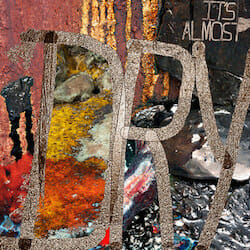 12. Pusha T: It’s Almost DryPusha T has become synonymous with “coke rap,” a genre that is often imitated, but rarely perfected. It’s Almost Dry does not feel as much like a grand gesture as it does a statement that Push is still as limber as ever. Over production provided by Kanye West and Pharrell Williams, he paints graphic, uncomfortable pictures of the dark underbellies of the rap game and drug game, serving as a warning shot to stay away from the king. Pusha T sounds like he is on top of the world, reinvigorated as he enters another decade to dominate. —Jade Gomez
12. Pusha T: It’s Almost DryPusha T has become synonymous with “coke rap,” a genre that is often imitated, but rarely perfected. It’s Almost Dry does not feel as much like a grand gesture as it does a statement that Push is still as limber as ever. Over production provided by Kanye West and Pharrell Williams, he paints graphic, uncomfortable pictures of the dark underbellies of the rap game and drug game, serving as a warning shot to stay away from the king. Pusha T sounds like he is on top of the world, reinvigorated as he enters another decade to dominate. —Jade Gomez
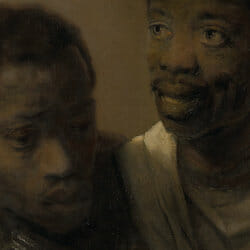 11. billy woods: AethiopesBilly woods requires patience to wade through dense raps that shine an uncomfortably bright light on life and its flaws. Add in Preservation’s production, which similarly comes from multiple reference points, and you get Aethiopes. Woods shifts in and out of perspectives, keeping listeners on their toes for a challenging, illuminating experience. With an impressive feature list that includes everyone from Boldy James and Quelle Chris to Despot and El-P, woods peels back his mythos a bit more, and allows his skill and humor to shine alongside other brilliant minds. Aethiopes is woods at some of his most uninhibited, allowing himself to slip through the cracks in pursuit of taking risks. —Jade Gomez
11. billy woods: AethiopesBilly woods requires patience to wade through dense raps that shine an uncomfortably bright light on life and its flaws. Add in Preservation’s production, which similarly comes from multiple reference points, and you get Aethiopes. Woods shifts in and out of perspectives, keeping listeners on their toes for a challenging, illuminating experience. With an impressive feature list that includes everyone from Boldy James and Quelle Chris to Despot and El-P, woods peels back his mythos a bit more, and allows his skill and humor to shine alongside other brilliant minds. Aethiopes is woods at some of his most uninhibited, allowing himself to slip through the cracks in pursuit of taking risks. —Jade Gomez
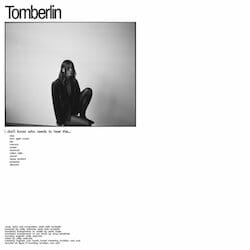 10. Tomberlin: i don’t know who needs to hear this…In recent years, there’s been an influx of musicians embracing minimalism. Often, the lack of excess can lead to these songs being dismissively tagged as “sad,” particularly if the artist dares to fill that space with any emotion at all. One of the finest practitioners of this sparse musicality is Sarah Beth Tomberlin, who performs under her surname. Her 2018 debut album At Weddings drew comparisons to ambient icons like Grouper and staples of contemporary indie like Julien Baker. Her music sits at the intersection of these artists’ in both sound and subject. At Weddings dealt with Tomberlin’s internal conflict, having left her home and religion behind. Raised in rural Illinois as a pastor’s kid, she uprooted to Louisville, where the bulk of At Weddings came to fruition. Since then, she’s moved to New York and released an EP called Projections in 2020. Projections, produced with Alex G, saw Tomberlin’s arrangements fill out—several of its tracks played with percussion, something rarely found on her debut. The natural next step was for her to follow in the footsteps of Baker, who began making hollow, devastating music before gradually fleshing out her band. And she did, sort of. Her new album, i don’t know who needs to hear this… is grander than anything she’s done before, but rarely does it feel like a departure. Recorded in Brooklyn with producer Philip Weinrobe, known for his work with Adrienne Lenker and Buck Meek, the record features contributions from Shahzad Islamly and Told Slant’s Felix Walworth. Where At Weddings was written without a goal in mind and carries that homespun air, the deliberateness of the songs on idkwntht is palpable. At the record’s heart is Tomberlin simultaneously embracing self-love and acceptance (“born again runner”), and taking love away from toxic influences (“collect caller”), no matter how difficult both acts may be. Results aren’t the point; it is simply the act of trying and holding space for one’s emotions that counts. —Eric Bennett
10. Tomberlin: i don’t know who needs to hear this…In recent years, there’s been an influx of musicians embracing minimalism. Often, the lack of excess can lead to these songs being dismissively tagged as “sad,” particularly if the artist dares to fill that space with any emotion at all. One of the finest practitioners of this sparse musicality is Sarah Beth Tomberlin, who performs under her surname. Her 2018 debut album At Weddings drew comparisons to ambient icons like Grouper and staples of contemporary indie like Julien Baker. Her music sits at the intersection of these artists’ in both sound and subject. At Weddings dealt with Tomberlin’s internal conflict, having left her home and religion behind. Raised in rural Illinois as a pastor’s kid, she uprooted to Louisville, where the bulk of At Weddings came to fruition. Since then, she’s moved to New York and released an EP called Projections in 2020. Projections, produced with Alex G, saw Tomberlin’s arrangements fill out—several of its tracks played with percussion, something rarely found on her debut. The natural next step was for her to follow in the footsteps of Baker, who began making hollow, devastating music before gradually fleshing out her band. And she did, sort of. Her new album, i don’t know who needs to hear this… is grander than anything she’s done before, but rarely does it feel like a departure. Recorded in Brooklyn with producer Philip Weinrobe, known for his work with Adrienne Lenker and Buck Meek, the record features contributions from Shahzad Islamly and Told Slant’s Felix Walworth. Where At Weddings was written without a goal in mind and carries that homespun air, the deliberateness of the songs on idkwntht is palpable. At the record’s heart is Tomberlin simultaneously embracing self-love and acceptance (“born again runner”), and taking love away from toxic influences (“collect caller”), no matter how difficult both acts may be. Results aren’t the point; it is simply the act of trying and holding space for one’s emotions that counts. —Eric Bennett
 9. Rosalía: MOTOMAMIIt was hard to imagine how much further Spanish pop star Rosalía could stretch her chameleonic ability to create experimental music that’s still accessible enough to transcend language. Then MOTOMAMI arrived, and we no longer had to imagine. By seamlessly exploring sexuality and spirituality through an eclectic mix of reggaeton, flamenco and even elements of hyperpop, Rosalía once again emerges as a nearly peerless artist who can slip into any genre and execute it with ease. Who else would think to interpolate a Soulja Boy sample into “DELIRIO DE GRANDEZA,” a cover of a 1968 song by Cuban salsa singer Justo Betancourt? Or work jazz-inspired percussion into “SAOKO,” a track that turns around and explodes into a pop banger the second it’s sure we’re not paying attention? Rosalía’s ability to weave references together while still putting her distinctive stamp on the finished product has cemented her place as a figure for whom fans will drop everything the second they find out she’s involved. As much an extended confession as it is a celebration, a project like MOTOMAMI makes it easy to see why they feel that way. —Elise Soutar
9. Rosalía: MOTOMAMIIt was hard to imagine how much further Spanish pop star Rosalía could stretch her chameleonic ability to create experimental music that’s still accessible enough to transcend language. Then MOTOMAMI arrived, and we no longer had to imagine. By seamlessly exploring sexuality and spirituality through an eclectic mix of reggaeton, flamenco and even elements of hyperpop, Rosalía once again emerges as a nearly peerless artist who can slip into any genre and execute it with ease. Who else would think to interpolate a Soulja Boy sample into “DELIRIO DE GRANDEZA,” a cover of a 1968 song by Cuban salsa singer Justo Betancourt? Or work jazz-inspired percussion into “SAOKO,” a track that turns around and explodes into a pop banger the second it’s sure we’re not paying attention? Rosalía’s ability to weave references together while still putting her distinctive stamp on the finished product has cemented her place as a figure for whom fans will drop everything the second they find out she’s involved. As much an extended confession as it is a celebration, a project like MOTOMAMI makes it easy to see why they feel that way. —Elise Soutar
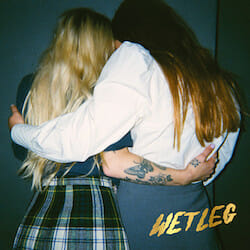 8. Wet Leg: Wet LegIf Wet Leg’s only achievement had been demonstrating the correct pronunciation of a popular seating option with their 2021 single “Chaise Longue,” that would have been enough. The song is droll and hooky, a blast of anarchic energy packed into three-ish minutes of deadpan vocals and careening guitars. Turns out that’s not their only achievement. In fact, “Chaise Longue” is basically a setup for Wet Leg’s self-titled first album, a gleefully bawdy, often adrenalizing exploration of ennui, lust and catharsis. It can be tempting to think (or fear) that a band that debuts with a funny song is destined to be a gimmick, but Wet Leg principles Rhian Teasdale and Hester Chambers dispel any such concern with a display of range and depth on these 12 songs. They do angular indie rock with precise, metronomic vocals on “Angelica,” there’s a dance-y beat pushing a bright melody on “Ur Mom” as buzzsaw guitars come and go, and “Supermarket” winds around on shambling guitars and loose-limbed backing vocals, like some slacker-rock anthem from people who aren’t really slackers at all. —Eric R. Danton
8. Wet Leg: Wet LegIf Wet Leg’s only achievement had been demonstrating the correct pronunciation of a popular seating option with their 2021 single “Chaise Longue,” that would have been enough. The song is droll and hooky, a blast of anarchic energy packed into three-ish minutes of deadpan vocals and careening guitars. Turns out that’s not their only achievement. In fact, “Chaise Longue” is basically a setup for Wet Leg’s self-titled first album, a gleefully bawdy, often adrenalizing exploration of ennui, lust and catharsis. It can be tempting to think (or fear) that a band that debuts with a funny song is destined to be a gimmick, but Wet Leg principles Rhian Teasdale and Hester Chambers dispel any such concern with a display of range and depth on these 12 songs. They do angular indie rock with precise, metronomic vocals on “Angelica,” there’s a dance-y beat pushing a bright melody on “Ur Mom” as buzzsaw guitars come and go, and “Supermarket” winds around on shambling guitars and loose-limbed backing vocals, like some slacker-rock anthem from people who aren’t really slackers at all. —Eric R. Danton
 7. Ethel Cain: Preacher’s DaughterEthel Cain is on a brilliant ascent. Last year’s Inbred EP solidified her position as a force to be witnessed in American music as she wrestled with the uniquely Southern version of the American dream that shaped her young life. The divinity of gospel, the audacity of heartland rock and the frankness of 2010s Tumblr-era pop collide into an arresting narrative spectacle, portraying the experience of a woman who is intimately familiar with depraved violence, the gospel and the strict social hierarchies of the South and the Plains. The EPs have only revealed a portion of Cain’s lore, but on her whopping 75-minute debut LP Preacher’s Daughter, Ethel Cain, the narrative figure and the musical sensation, manifests a breathtaking account of a woman, her mysterious partner and her troubled family. Much as Inbred mangled Americana, ambient folk and slowcore into a terrifying sonic experiment, Preacher’s Daughter is a sound all its own. Imagine what would happen if singers as familiar as Bruce Springsteen or Nichole Nordeman were backed by Midwife or Sunn O))). The glamorous and aphrodisiac sound of Lana Del Rey is undoubtedly there, but the thematic and instrumental elements on Preacher’s Daughter possess a weightiness and impulse away from ironic glamorization of the American dream and toward outright criticism that render the comparison only so relevant. At times the record throbs with a noisy, immersive intensity before transitioning into the kind of epic guitar solos that decorated the cult of rock personalities in generations past. This collision of dark ambient and Def Leppard is uniquely American in the best way conceivable. —Devon Chodzin
7. Ethel Cain: Preacher’s DaughterEthel Cain is on a brilliant ascent. Last year’s Inbred EP solidified her position as a force to be witnessed in American music as she wrestled with the uniquely Southern version of the American dream that shaped her young life. The divinity of gospel, the audacity of heartland rock and the frankness of 2010s Tumblr-era pop collide into an arresting narrative spectacle, portraying the experience of a woman who is intimately familiar with depraved violence, the gospel and the strict social hierarchies of the South and the Plains. The EPs have only revealed a portion of Cain’s lore, but on her whopping 75-minute debut LP Preacher’s Daughter, Ethel Cain, the narrative figure and the musical sensation, manifests a breathtaking account of a woman, her mysterious partner and her troubled family. Much as Inbred mangled Americana, ambient folk and slowcore into a terrifying sonic experiment, Preacher’s Daughter is a sound all its own. Imagine what would happen if singers as familiar as Bruce Springsteen or Nichole Nordeman were backed by Midwife or Sunn O))). The glamorous and aphrodisiac sound of Lana Del Rey is undoubtedly there, but the thematic and instrumental elements on Preacher’s Daughter possess a weightiness and impulse away from ironic glamorization of the American dream and toward outright criticism that render the comparison only so relevant. At times the record throbs with a noisy, immersive intensity before transitioning into the kind of epic guitar solos that decorated the cult of rock personalities in generations past. This collision of dark ambient and Def Leppard is uniquely American in the best way conceivable. —Devon Chodzin
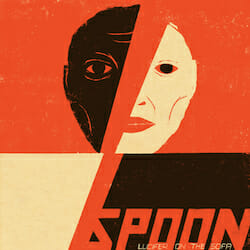 6. Spoon: Lucifer On The SofaIt’s hard to think of many bands who have been as consistently excellent for as long as Spoon have. For close to 30 years now, the Austin group have managed to maintain a restless, unsettled energy, expanding their sonic palette and transcending their obvious early influences as Britt Daniel, Jim Eno and a shifting lineup of collaborators honed a distinctive sound all their own. Spoon haven’t eased off a bit on Lucifer on the Sofa. The band’s 10th album is also its first since 2017, and while it’s been a while since Spoon have had anything to prove, they still sound hungry. Indeed, Daniel has said that the title of the album refers to battling against “the bitterness, or lack of motivation or desperation that keeps you down and makes you do nothing or self-indulge.” Suffice to say that lack of motivation wasn’t a problem here. Lucifer on the Sofa is taut and textured, mixing trebly, caustic guitar licks with piano and big, propulsive currents of rhythm. Sometimes there’s a potent urgency underpinning the songs: “Feels Alright,” for example, opens with an abrading descending guitar riff and a boom-bap beat, then pivots into a vamp right on the edge of funk, with a lot of movement in the bassline. Elsewhere, “The Hardest Cut” is a tough boogie that bubbles and seethes with guitars over a relentless, clapping beat. There’s more than a hint here of another Texas stalwart, ZZ Top, but refracted through Spoon’s own particular sensibility. If Lucifer has taken up a position on their sofa, Spoon have no intention of sitting there and keeping him company. —Eric R. Danton
6. Spoon: Lucifer On The SofaIt’s hard to think of many bands who have been as consistently excellent for as long as Spoon have. For close to 30 years now, the Austin group have managed to maintain a restless, unsettled energy, expanding their sonic palette and transcending their obvious early influences as Britt Daniel, Jim Eno and a shifting lineup of collaborators honed a distinctive sound all their own. Spoon haven’t eased off a bit on Lucifer on the Sofa. The band’s 10th album is also its first since 2017, and while it’s been a while since Spoon have had anything to prove, they still sound hungry. Indeed, Daniel has said that the title of the album refers to battling against “the bitterness, or lack of motivation or desperation that keeps you down and makes you do nothing or self-indulge.” Suffice to say that lack of motivation wasn’t a problem here. Lucifer on the Sofa is taut and textured, mixing trebly, caustic guitar licks with piano and big, propulsive currents of rhythm. Sometimes there’s a potent urgency underpinning the songs: “Feels Alright,” for example, opens with an abrading descending guitar riff and a boom-bap beat, then pivots into a vamp right on the edge of funk, with a lot of movement in the bassline. Elsewhere, “The Hardest Cut” is a tough boogie that bubbles and seethes with guitars over a relentless, clapping beat. There’s more than a hint here of another Texas stalwart, ZZ Top, but refracted through Spoon’s own particular sensibility. If Lucifer has taken up a position on their sofa, Spoon have no intention of sitting there and keeping him company. —Eric R. Danton
 5. Cate Le Bon: PompeiiCate Le Bon’s been called an absurdist—a weirdo, an alien—because her music is industrial and her songwriting is a product of deliberate philosophical interrogation in an era of impatient desire for commodified answers. She works among envelope-pushers like black midi and The Spirit of the Beehive, acts existing on a margin where technical skill and inventive, experimental visions intersect. She’s not quite as singer/songwriter-oriented as Weyes Blood; her electronic compositions aren’t droney or balmy like Ellen Arkbro’s; she’s a Dadaist at heart, an active practitioner of purposefully off-kilter soundscapes and contrarian responses to traditional art of the era. But on Pompeii, Le Bon completely ruptures the mold, using the record to divorce herself from the current subculture of flashy 1980s new wave ripoffs by tackling similar themes of religious affection, but through a subdued, meticulous approach. The LP’s tonal landscape derives from Japanese city pop, Depeche Mode synths, jazz percussion and the Dada bleakness of Cabaret Voltaire. Stella Mozgawa, a frequent collaborator of Le Bon, Courtney Barnett and Kurt Vile, brings patient percussion to the compositions; Stephen Black’s saxophone sounds like a glossy, beautiful earthquake. Samur Khouja’s production energizes Le Bon to lean far into a paradox: ancient texts germinating into contemporary lyricism. —Matt Mitchell
5. Cate Le Bon: PompeiiCate Le Bon’s been called an absurdist—a weirdo, an alien—because her music is industrial and her songwriting is a product of deliberate philosophical interrogation in an era of impatient desire for commodified answers. She works among envelope-pushers like black midi and The Spirit of the Beehive, acts existing on a margin where technical skill and inventive, experimental visions intersect. She’s not quite as singer/songwriter-oriented as Weyes Blood; her electronic compositions aren’t droney or balmy like Ellen Arkbro’s; she’s a Dadaist at heart, an active practitioner of purposefully off-kilter soundscapes and contrarian responses to traditional art of the era. But on Pompeii, Le Bon completely ruptures the mold, using the record to divorce herself from the current subculture of flashy 1980s new wave ripoffs by tackling similar themes of religious affection, but through a subdued, meticulous approach. The LP’s tonal landscape derives from Japanese city pop, Depeche Mode synths, jazz percussion and the Dada bleakness of Cabaret Voltaire. Stella Mozgawa, a frequent collaborator of Le Bon, Courtney Barnett and Kurt Vile, brings patient percussion to the compositions; Stephen Black’s saxophone sounds like a glossy, beautiful earthquake. Samur Khouja’s production energizes Le Bon to lean far into a paradox: ancient texts germinating into contemporary lyricism. —Matt Mitchell
 4. Angel Olsen: Big TimeOn Big Time, the grand, burgeoning, symphonic gestures of Angel Olsen’s last three studio LPs are gone, substituted with Phases-era, minimalistic, pedal steel-tinged sobcore and dreamy twang. It’s a one-woman show, a prize fight where the challenger no-showed. Big Time isn’t a bummer opera; it’s a last-call, honky-tonk bar encore—and it rules. On opener “All The Good Times,” Olsen surrenders the album’s thesis, declaring that she’s done making excuses for everyone else. “I can’t say that I’m sorry when I don’t feel so wrong anymore,” she sings. The horn arrangements here are subtle, and Drew Erickson’s organ trembles slightly beneath Olsen’s vocals. It’s an announcement, a warning, that this is a new era of her songwriting. —Matt Mitchell
4. Angel Olsen: Big TimeOn Big Time, the grand, burgeoning, symphonic gestures of Angel Olsen’s last three studio LPs are gone, substituted with Phases-era, minimalistic, pedal steel-tinged sobcore and dreamy twang. It’s a one-woman show, a prize fight where the challenger no-showed. Big Time isn’t a bummer opera; it’s a last-call, honky-tonk bar encore—and it rules. On opener “All The Good Times,” Olsen surrenders the album’s thesis, declaring that she’s done making excuses for everyone else. “I can’t say that I’m sorry when I don’t feel so wrong anymore,” she sings. The horn arrangements here are subtle, and Drew Erickson’s organ trembles slightly beneath Olsen’s vocals. It’s an announcement, a warning, that this is a new era of her songwriting. —Matt Mitchell
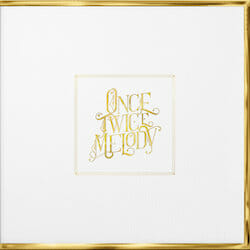 3. Beach House: Once Twice MelodySince 2004, Beach House have been enchanting us. Few artists in the last 20 years have managed to intoxicate their listeners so consistently and skillfully. In a catalog now spanning nearly 100 songs, the duo have very few duds. Maybe that’s because a Beach House song only asks as much of you as you’d like to give. Listen to “Lazuli” passively while lazing in a sunlit room or melt into it free of distractions, but the song will sweep over you either way. Like fog rolling in on a lake, you can see it—touch it, even—but you can’t capture or evade it. And if you tried to describe it to an alien from another planet, you probably wouldn’t get very far. Released in four “chapters” over the course of a few months, Once Twice Melody again accomplishes this feeling of inevitability. The eighth album from the pair of dream-pop stalwarts (a term that is surely overused, but one that applies here, if anywhere) consisting of Victoria Legrand and Alex Scally won’t shock any longtime Beach House listeners. But it will certainly thrill them. From the majestic opening notes of the title track to the last electronic flourish of closer “Modern Love Stories,” Once Twice Melody is the culmination of everything Beach House do best. —Ellen Johnson
3. Beach House: Once Twice MelodySince 2004, Beach House have been enchanting us. Few artists in the last 20 years have managed to intoxicate their listeners so consistently and skillfully. In a catalog now spanning nearly 100 songs, the duo have very few duds. Maybe that’s because a Beach House song only asks as much of you as you’d like to give. Listen to “Lazuli” passively while lazing in a sunlit room or melt into it free of distractions, but the song will sweep over you either way. Like fog rolling in on a lake, you can see it—touch it, even—but you can’t capture or evade it. And if you tried to describe it to an alien from another planet, you probably wouldn’t get very far. Released in four “chapters” over the course of a few months, Once Twice Melody again accomplishes this feeling of inevitability. The eighth album from the pair of dream-pop stalwarts (a term that is surely overused, but one that applies here, if anywhere) consisting of Victoria Legrand and Alex Scally won’t shock any longtime Beach House listeners. But it will certainly thrill them. From the majestic opening notes of the title track to the last electronic flourish of closer “Modern Love Stories,” Once Twice Melody is the culmination of everything Beach House do best. —Ellen Johnson
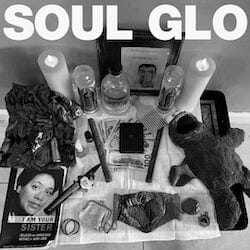 2. Soul Glo: Diaspora ProblemsThe new album by Philadelphia’s Soul Glo should be viewed as nothing short of a new tectonic shift in the world of hardcore punk. Listening to Diaspora Problems, you get the sense that Soul Glo are less concerned with getting the opportunity to perform a medley of new tunes on a prestigious late-night spot than hanging behind to dismantle the stale conventions of the often white male-dominated underground scene they cut their teeth in. And my goodness, do Soul Glo deliver. The rage contained within the 12 songs on Diaspora Problems is potent enough to launch anyone clinging to the status quo or softening of aggressive music out of an airlock into space to make way for a better tomorrow. Soul Glo have caused a clearing in the forest with an album so boundless in its creativity that it cannot be ignored. This is the shape of hardcore that we had been promised. —Pat King
2. Soul Glo: Diaspora ProblemsThe new album by Philadelphia’s Soul Glo should be viewed as nothing short of a new tectonic shift in the world of hardcore punk. Listening to Diaspora Problems, you get the sense that Soul Glo are less concerned with getting the opportunity to perform a medley of new tunes on a prestigious late-night spot than hanging behind to dismantle the stale conventions of the often white male-dominated underground scene they cut their teeth in. And my goodness, do Soul Glo deliver. The rage contained within the 12 songs on Diaspora Problems is potent enough to launch anyone clinging to the status quo or softening of aggressive music out of an airlock into space to make way for a better tomorrow. Soul Glo have caused a clearing in the forest with an album so boundless in its creativity that it cannot be ignored. This is the shape of hardcore that we had been promised. —Pat King
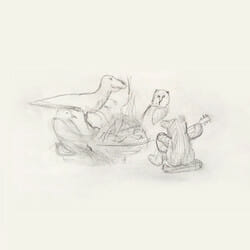 1. Big Thief: Dragon New Warm Mountain I Believe In YouWhat great bands often do when they realize they’re at the peak of their powers is make a double album. The first year of the pandemic allowed Big Thief the time and space to indulge this hubristic tradition. Faced with their longest break from touring since 2016’s Masterpiece came out, they wrote at a feverish pace and spent five months recording in four distinct sessions—in upstate New York, in California, in the Rocky Mountains, and in Tucson—with four different engineers. By the last session, they had generated some 45 completed songs. The result is Dragon New Warm Mountain I Believe in You, a freewheeling creature that vibrates with the restlessness and ramshackle intimacy that have long distinguished this band, blown out to a new scale. It is an uncommonly warm and generous record, 20 songs in all—flitting from campfire folk (“Change”) to clanging cosmic rumination (“Time Escaping”) to countrified hoedown (“Spud Infinity”) in its first three tracks alone—and it solidifies Adrianne Lenker’s place as one of the greatest songwriters to emerge in the last five years. Dragon New Warm Mountain I Believe in You is not really an indie-rock album, at least not in the way that Two Hands was. There is no successor to “Not” here, nothing that belongs on a mid-2010s indie mood board. Instead, it revels in the earthy, joyously uncool tones of a ’70s hippie-folk record excavated from a garage sale. It is Big Thief’s loosest album and most ambitious album all at once. —Zach Schonfeld
1. Big Thief: Dragon New Warm Mountain I Believe In YouWhat great bands often do when they realize they’re at the peak of their powers is make a double album. The first year of the pandemic allowed Big Thief the time and space to indulge this hubristic tradition. Faced with their longest break from touring since 2016’s Masterpiece came out, they wrote at a feverish pace and spent five months recording in four distinct sessions—in upstate New York, in California, in the Rocky Mountains, and in Tucson—with four different engineers. By the last session, they had generated some 45 completed songs. The result is Dragon New Warm Mountain I Believe in You, a freewheeling creature that vibrates with the restlessness and ramshackle intimacy that have long distinguished this band, blown out to a new scale. It is an uncommonly warm and generous record, 20 songs in all—flitting from campfire folk (“Change”) to clanging cosmic rumination (“Time Escaping”) to countrified hoedown (“Spud Infinity”) in its first three tracks alone—and it solidifies Adrianne Lenker’s place as one of the greatest songwriters to emerge in the last five years. Dragon New Warm Mountain I Believe in You is not really an indie-rock album, at least not in the way that Two Hands was. There is no successor to “Not” here, nothing that belongs on a mid-2010s indie mood board. Instead, it revels in the earthy, joyously uncool tones of a ’70s hippie-folk record excavated from a garage sale. It is Big Thief’s loosest album and most ambitious album all at once. —Zach Schonfeld
Listen to our Best Albums of 2022 (So Far) playlist on Spotify here.







































